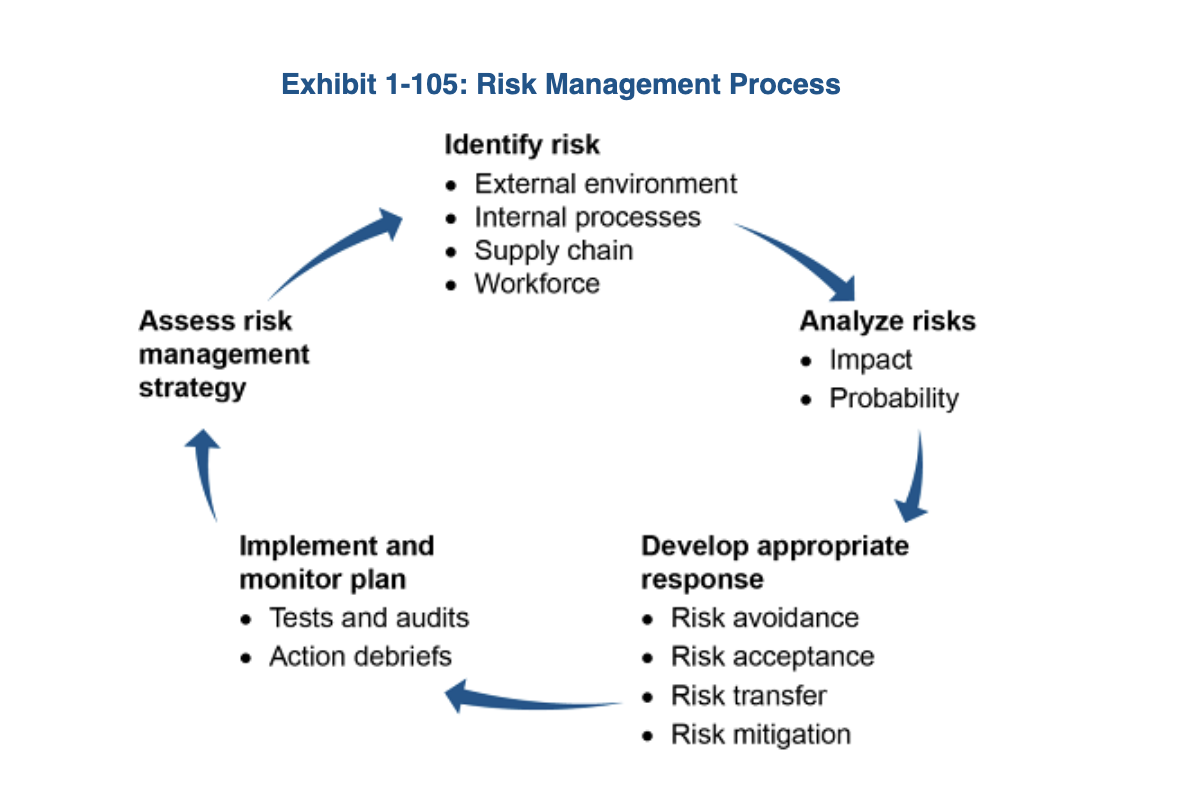CPIM - Module 1.5
1/9
There's no tags or description
Looks like no tags are added yet.
Name | Mastery | Learn | Test | Matching | Spaced |
|---|
No study sessions yet.
10 Terms
resilience
the ability to return to a position of equilibrium after experiencing an event that causes operational results to deviate from expectations. Resilience can be improved by increasing the number of response options and/or decreasing the time to execute those options. Resilience is improved by risk monitoring and control.
risk management
the identification, assessment, and prioritization of risks followed by coordinated and economical applications of resources to minimize, monitor and control the probability and/or impact of unfortunate events or to maximize the realization of opportunities.
Risk Management Process

Failure Mode and Effects Analysis (FMEA)
analysis in order to identify and rank potential risks. On 3 scopes: probability of failure, degree of severity, likelihood of escaping detection. Risk Priority Number (RPN) is assigned.
How to prevent failures?
Design out fail points
Build in redundant system
Use failsafe work methods
Maintenance
Mitigate risks
Recovering from failures
Discover
Act
Learn
Plan
Risk Matrix
Tool used to group the risks into corresponding groups based on Magnitude of Impact (High-Low) and Probability of Occurrence (High-Low)
4 approaches to manage risks
Risk acceptance
Risk avoidance
Risk mitigation
Risk transfer
redundancy
used in risk mitigation term as a backup capability… to reduce the effects of breakdowns
contingency planning
a process for creating a document that specifies alternative plans to facilitate project success if certain risk events occur.